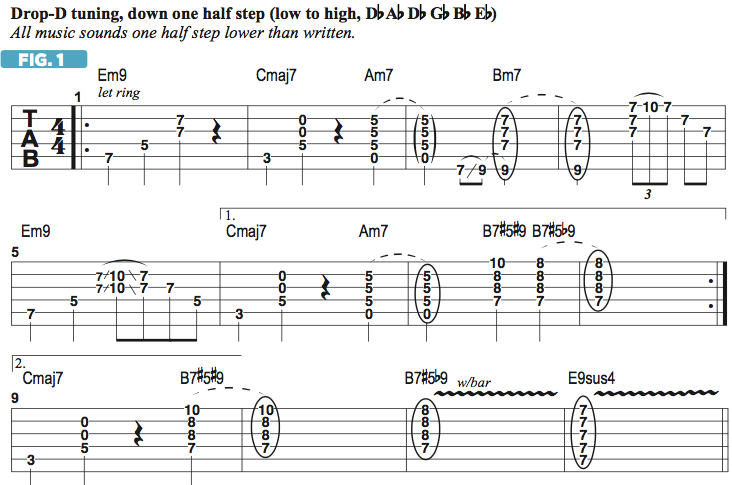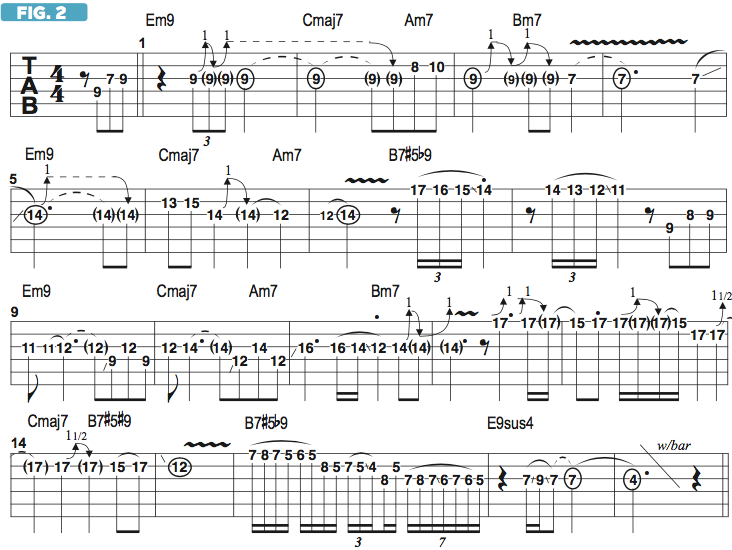Last month, I discussed how to take a simple chord progression and expand the harmony to create a more interesting, prog-like sound. This month, I’d like to take that proggy chord progression and demonstrate approaches for soloing over its various different chords.
The progression illustrated in FIGURE 1 is played in the key of E minor and goes Em9-Cmaj7-Am7-Bm7, which then repeats, but the second time through, it ends with B7#5b9. This entire pattern is then played again, culminating with an E9sus4 chord in the final bar.
The majority of the chords in this progression are arpeggiated, meaning the notes that make up the chord voicing are played individually next one. In bar 4, on beat two, I execute a quick hammer/pull on the high E string; this type of chordal embellishment is a staple of R&B rhythm guitar playing and can be heard often in the music of Jimi Hendrix, who was my primary influence in devising chordal variations like this. At the end of the pattern, I use my whammy bar to add some subtle vibrato to the sustained chords. I also rake across the strings to accentuate and arpeggiated sound. This movement is performed by dragging the pick across several strings in a single downstroke or upstroke.

FIGURE 2 presents a guitar solo played over this progression. The lines are based on the E natural minor scale (E F# G A B C D), starting in seventh position with a series of whole-step bends on the G string. I like to perform these it upwards. By bending an E note up one whole step to F#, I’m melodically describing the Em9 chord, as the ninth of E is F#. At the end of bar 3 and into bar 4, I sustain a D note, which functions as the minor third of the V (five) chord, Bm7 (B D F# A).

In bars 7 and 8, the inherent harmony of the single-note solo is broadened with the use of descending chromaticism, as I perform a combination of pull-offs and slides repeatedly on the high E string. As I move from bar 11 and 12 into bar 13, I progressively move higher up the fretboard to create a crescendo (increasing intensity) effect, and, after moving back down, the solo ends with fast descending phrases and more chromaticism on the high E, B and G strings. This is an intentionally “slippery” legato-style phrase, so strive for even execution in the sound of each pull-off and slide, in order to create as seamless and fluid a sound as possible.
All the latest guitar news, interviews, lessons, reviews, deals and more, direct to your inbox!
